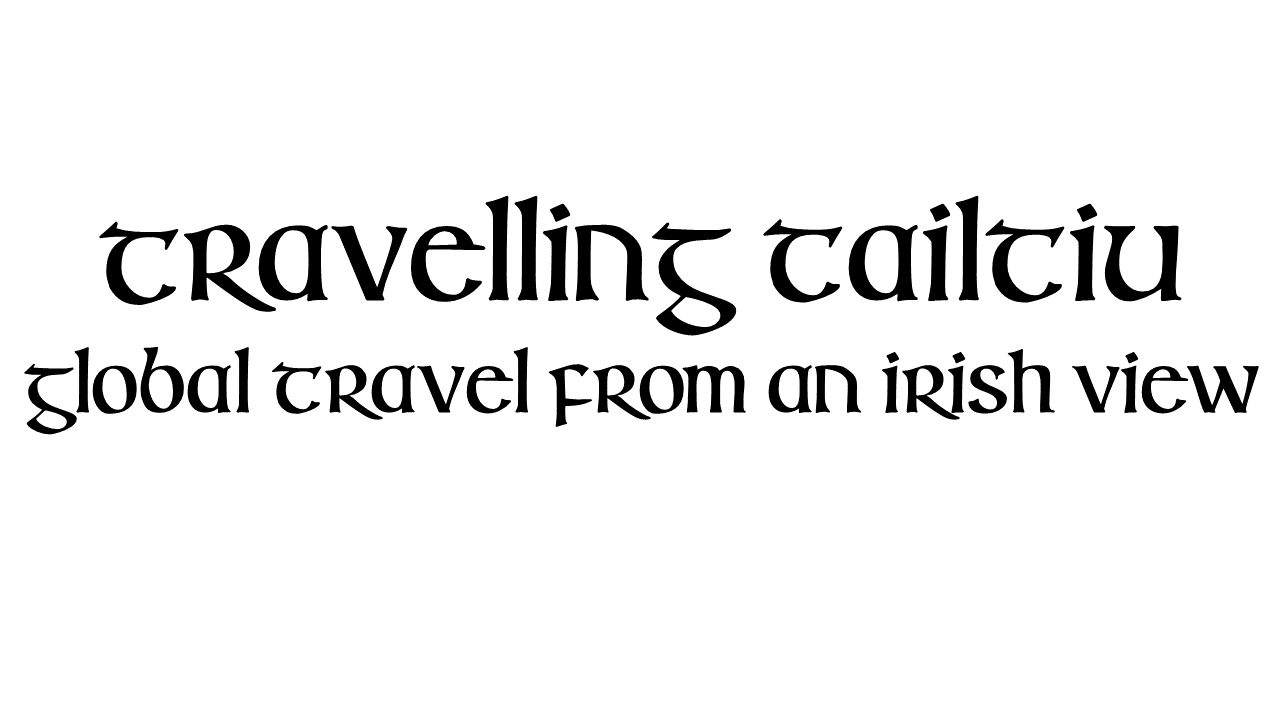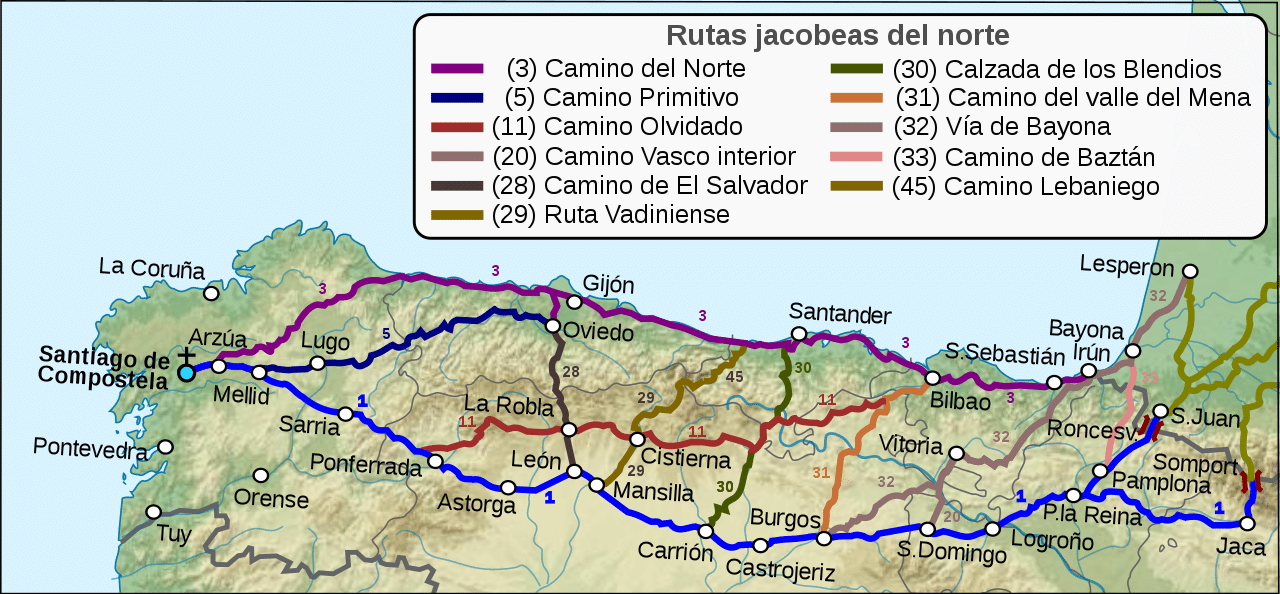Burgos
Burgos is a decent overnight stay if you are travelling around the north of Spain. Its central position in the north with good transport links makes it accessible to a variety of other interesting parts.
Burgos is about 90 minutes away from where we stay, in Bilbao, by bus or two hours by train. It is also accessible from Madrid, 90 minutes in a car or AVE (the high-speed train), or two and a half hours by bus. It is a central point on French Route of the Camino de Santiago, and the pilgrims are regularly seen resting there or rambling along the streets. On our last visit, we were actually in town to see Manu Chao, the famous Spanish-French social singer, in concert, so we have our musical counterculture faces on. You can read a bit more about the concert here, and a great time was had by all. It's great to see the younger and older countercultural generations melding together at concerts like this.
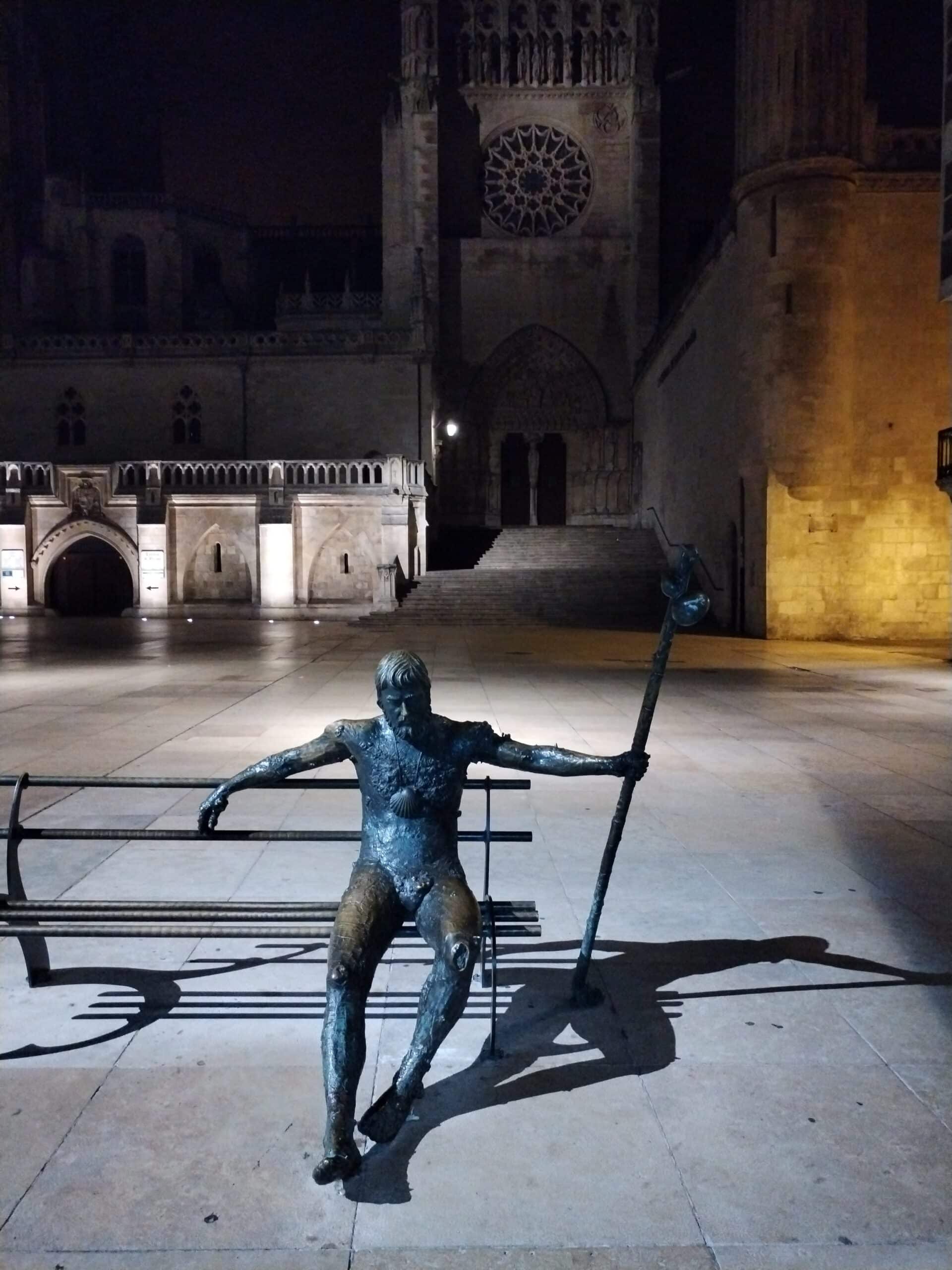
The tired and blistered pilgrim on Saint James' Walk.
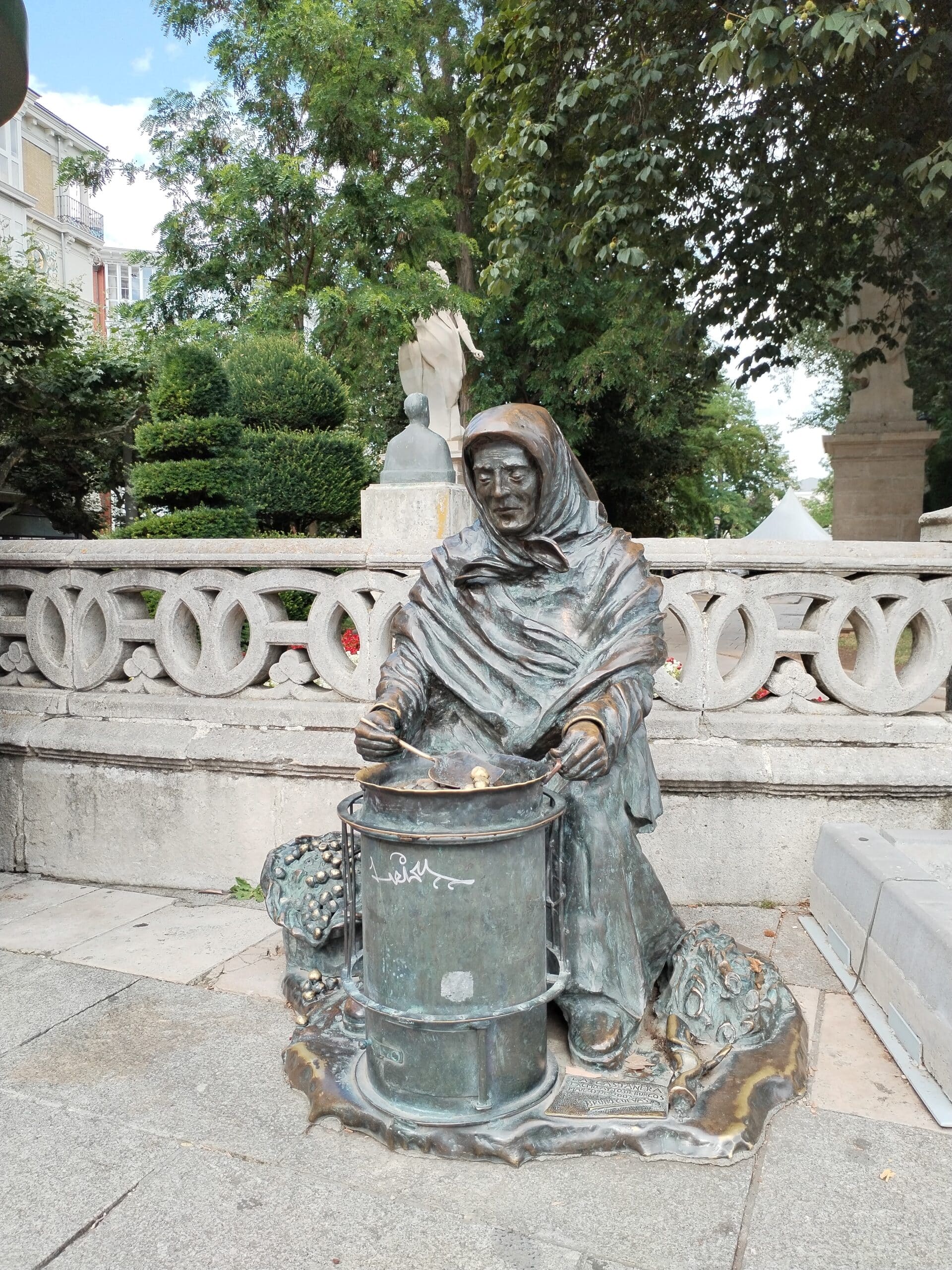
La Castañera de Burgos, cooking chesnuts for hungry folk.
Getting to Burgos
The train station, Burgos-Rosa Manzano, is WAY out of town but don't worry about that as it is well connected by buslines. At the door of the station, you can catch several buses to the centre and the bus stop is clearly timetabled. There are four bus lines, so if you aren't driving, you don't have much of a problem.
Alternatively, there is a bus station right in the centre of the city, where various coach companies arrive at and pass through. Whenever we go to Madrid from Bilbao, the bus occasionally passes through this station. We normally go with intercity coach company Alsa, whose website in English you can see here.
What to do and see in Burgos
Burgos is very historical and the heroic figure of El Cid can be seen around town. El Cid was a warlord and knight from the Burgos area, famous for his exploits during the Middle Ages. Although many portray him as a Christian fighting against Moorish dominance in the Iberian Peninsula, in fact he was in the service of both Christian and Muslim leaders, and ruled his own fiefdoms as independent states. He really did play the Iberian game of thrones of the time, and he played at the level of grand master.
The cathedral and surrounding area
He's not the only piece of history to be seen in the city of Burgos. There is a vibrant historical centre focused on the cathedral area, and the surrounding network of streets and plazas are fairly happening spots. This is the cultural hub of the town, and a nice compact area to walk around. Like a lot of Spanish cities, there are a lot of metallic sculptures decorating pedestrian streets, so you get an idea of a city's culture from these. They might portray the town's history, or there might be references to famous people connected to the town. There might even be some modern references or just something portraying life in general, like the statue of the little girl with an umbrella on Calle de la Concordia.
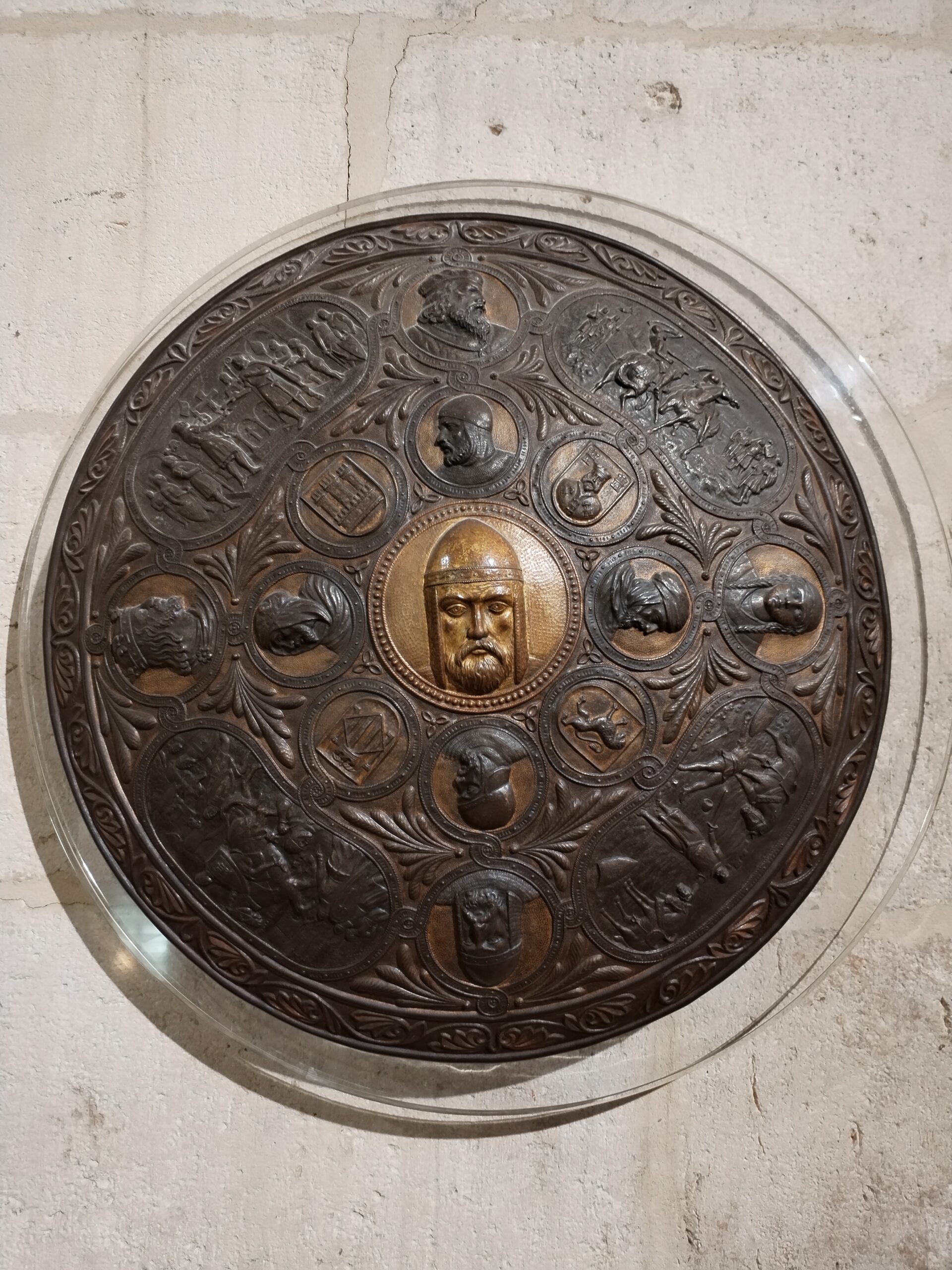
Burgos Shields
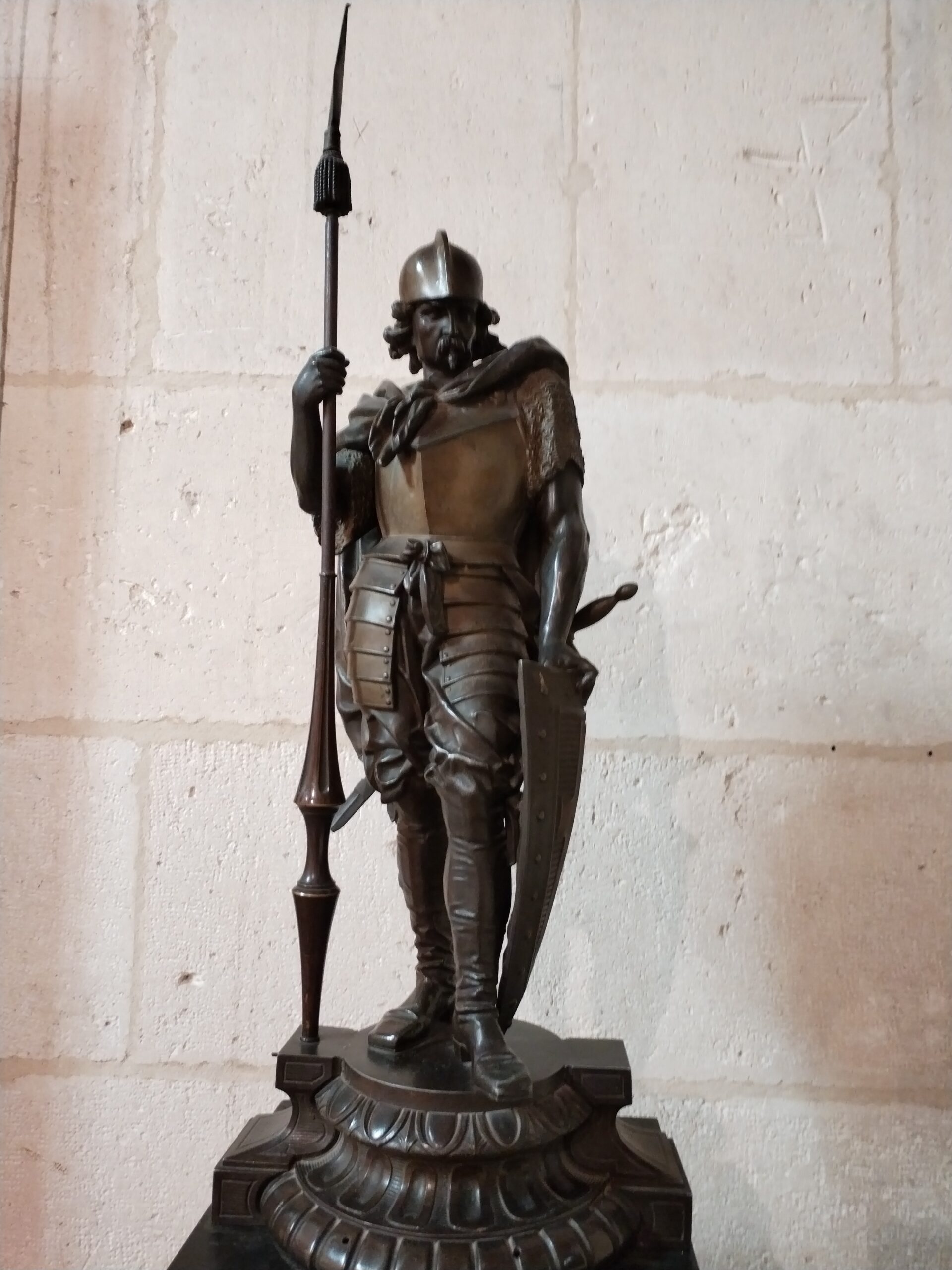
Spanish Knights
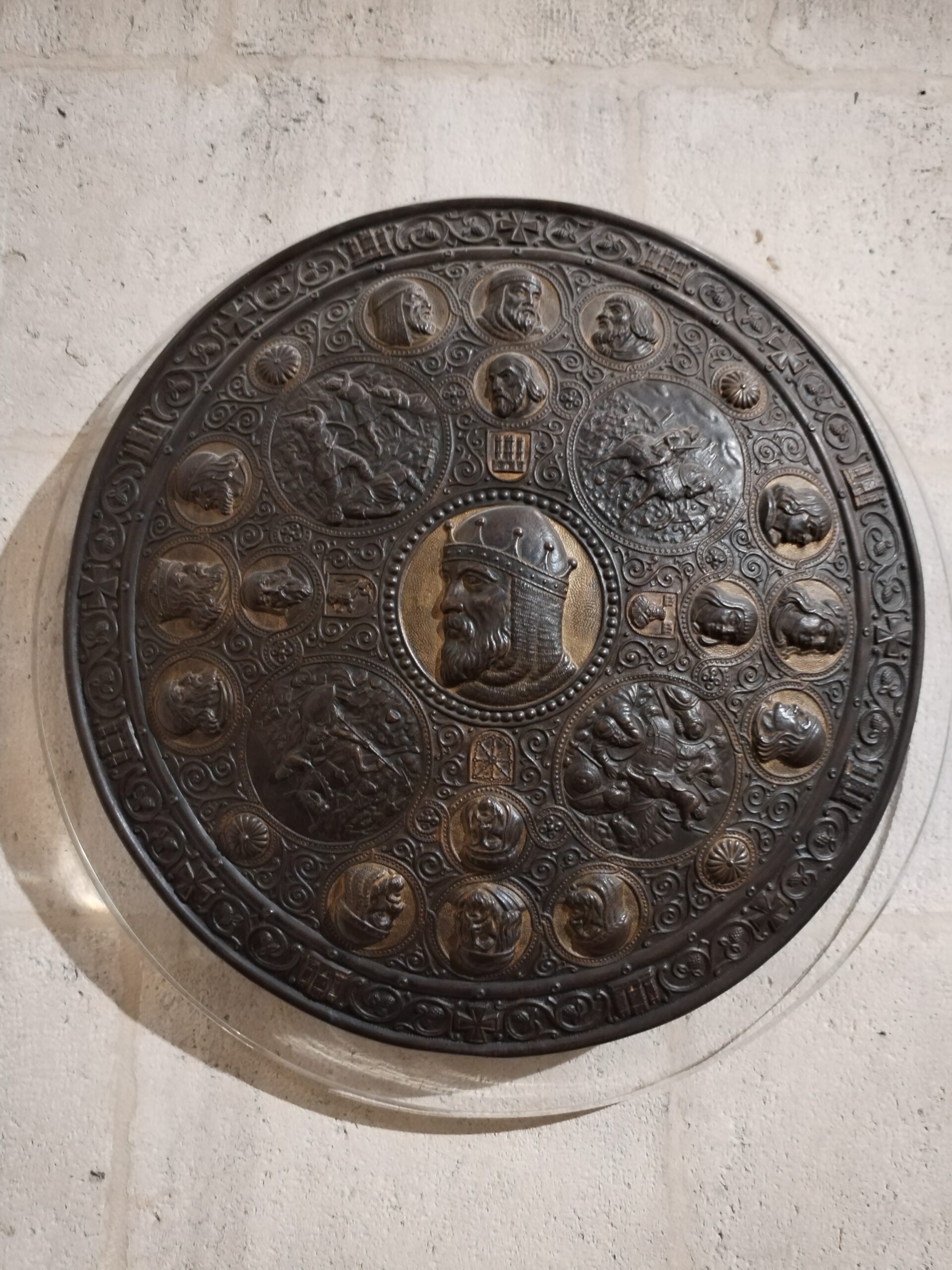
Burgos Shields
All of it gives you something to look at as you wander around, and if you get tired, there's always a café or bar close to the sculptures. The weather is very much outdoor here and given the pedestrian streets, you have the choice of outdoor terraces to rest and have a drink at.
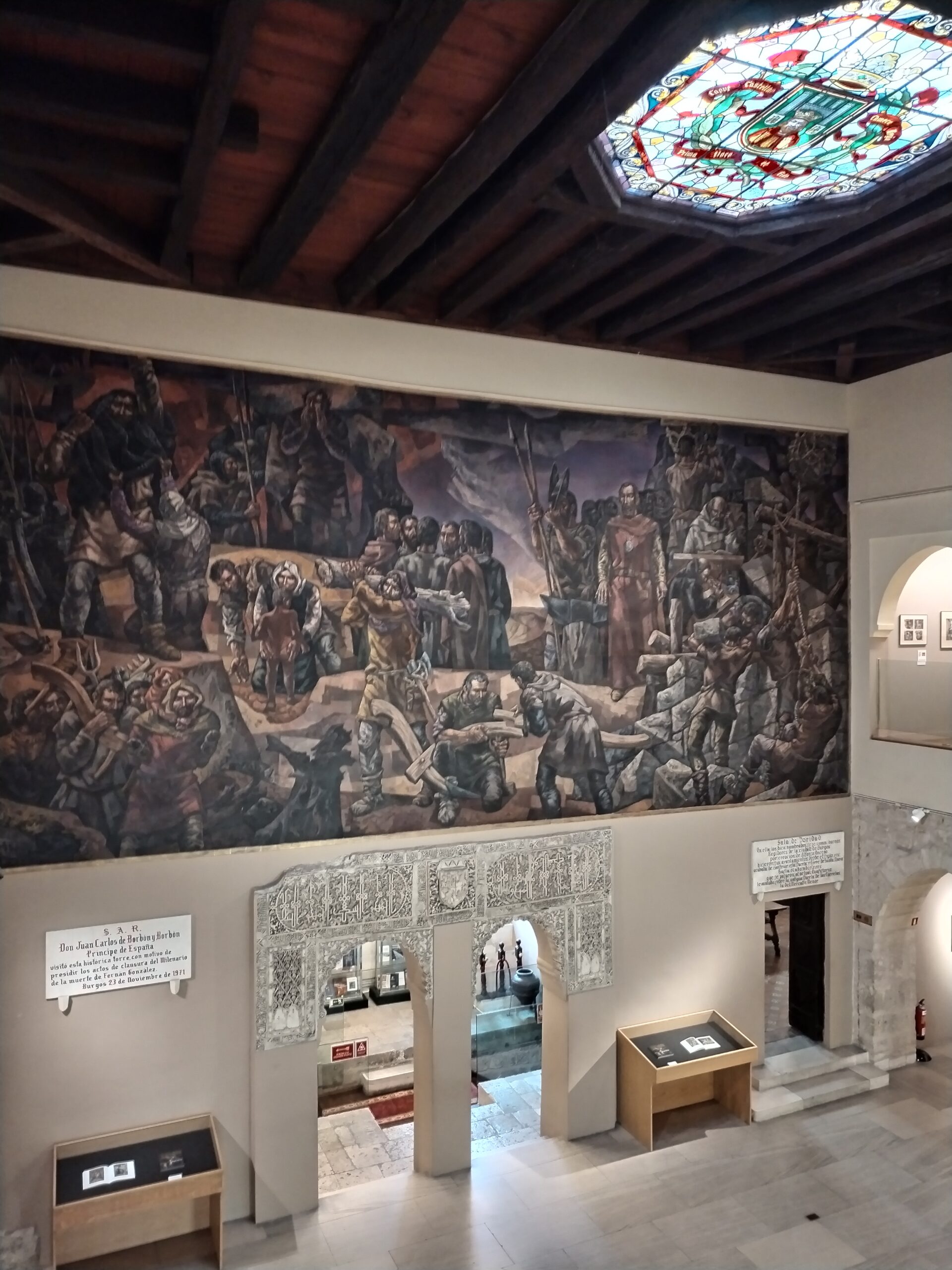
Santa María Arch display room
One such bar is Paradise Café, whose Instagram you can see here. It's a friendly wee place and while mentioning the prevalence of art on the streets, we can say that art often arrives inside the local business establishments, as you can see from the picture below. So there's plenty to look at, inside and out, just make sure to enjoy your coffee as you consider the grand masters of art!
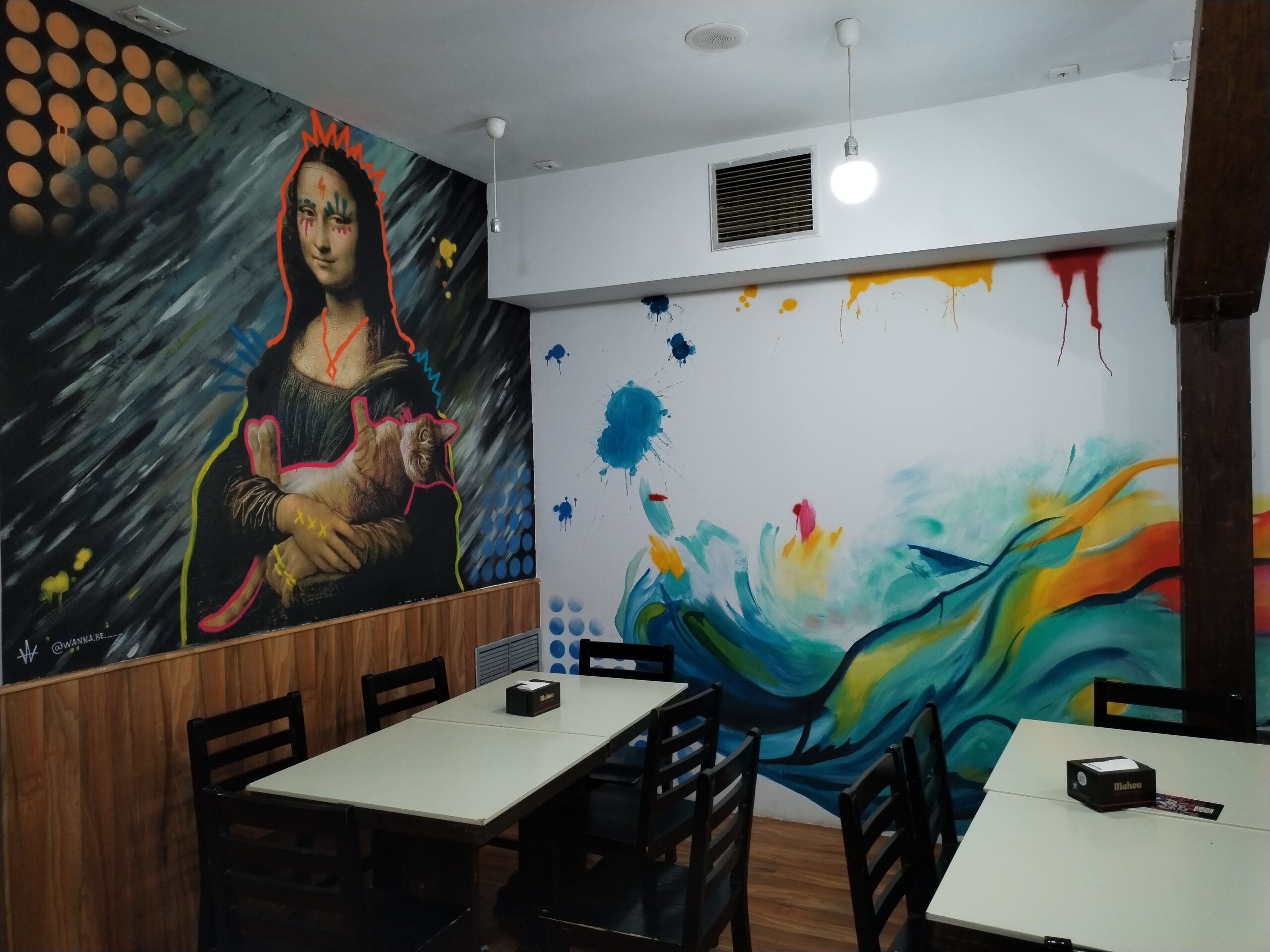
Mona Lisa and a bit of fancy wall art in Paradise Café in Burgos. Click the image to check out the Café's website.
The Arco de Santa María and tourist office displays
There is a museum in town, though we didn't go to it this time. The tourist office has several floors of exhibitions though and the entry point to the cathedral area, Santa María Arch, has upstairs rooms with interesting exhibitions. As they are both right on or beside the cathedral plaza, they make for a compact series of activities as good as any museum.
Santa María Arch is the entrance to the plaza outside the cathedral but the arch's building holds some interesting details. There are exhibitions upstairs, with historical items and artwork. The tourist office also contains several exhibits, including wine and stained-glass exhibitions.
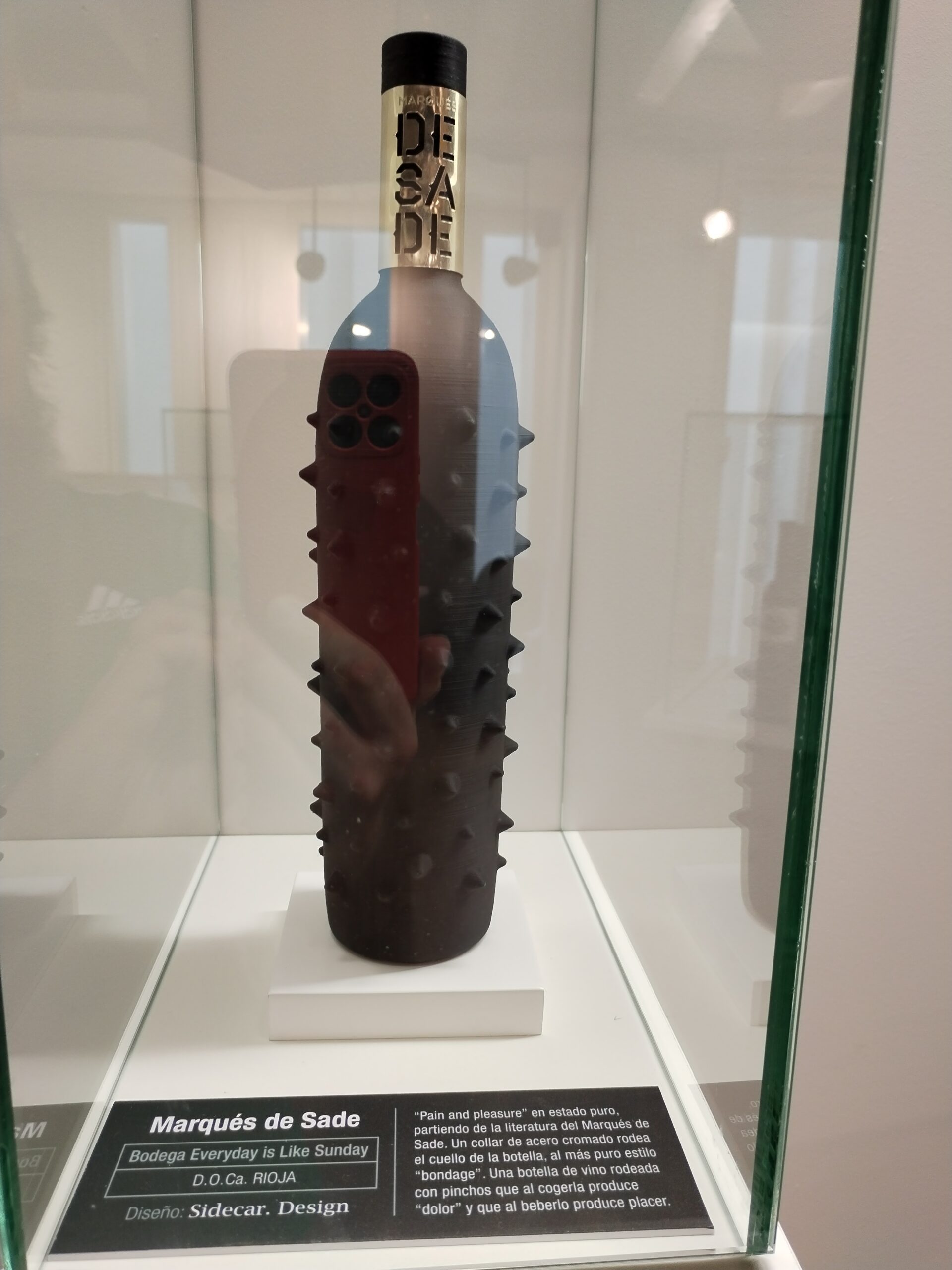
A spiky little number recalling the infamous Marquess of Sade!
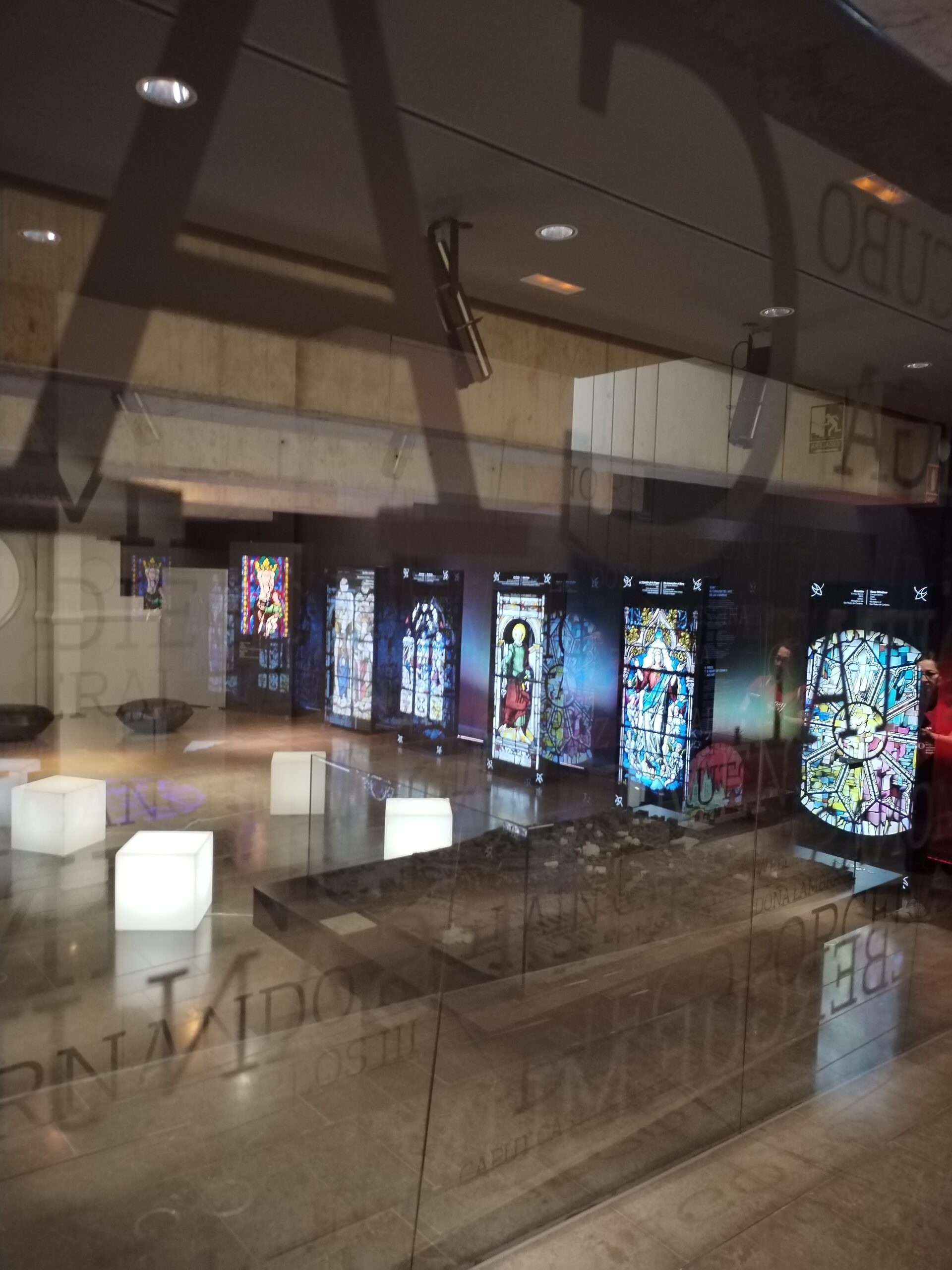
The stained-glass exhibition in Burgos tourist office.
Riverside
Burgos sits on the Arlanzón, which is a tributary of the Arlanza River. It isn't a huge river, and it has some nice grassy walks along its banks. The city's features are elevated above this on higher walls, and there are some nice leafy walks, like Paseo de Marceliano Santa María, which has statues, verandas and a craft market the day we visited. This riverside walk sits parallel to the streets around the historical centre, so it and the river aren't too far from things.
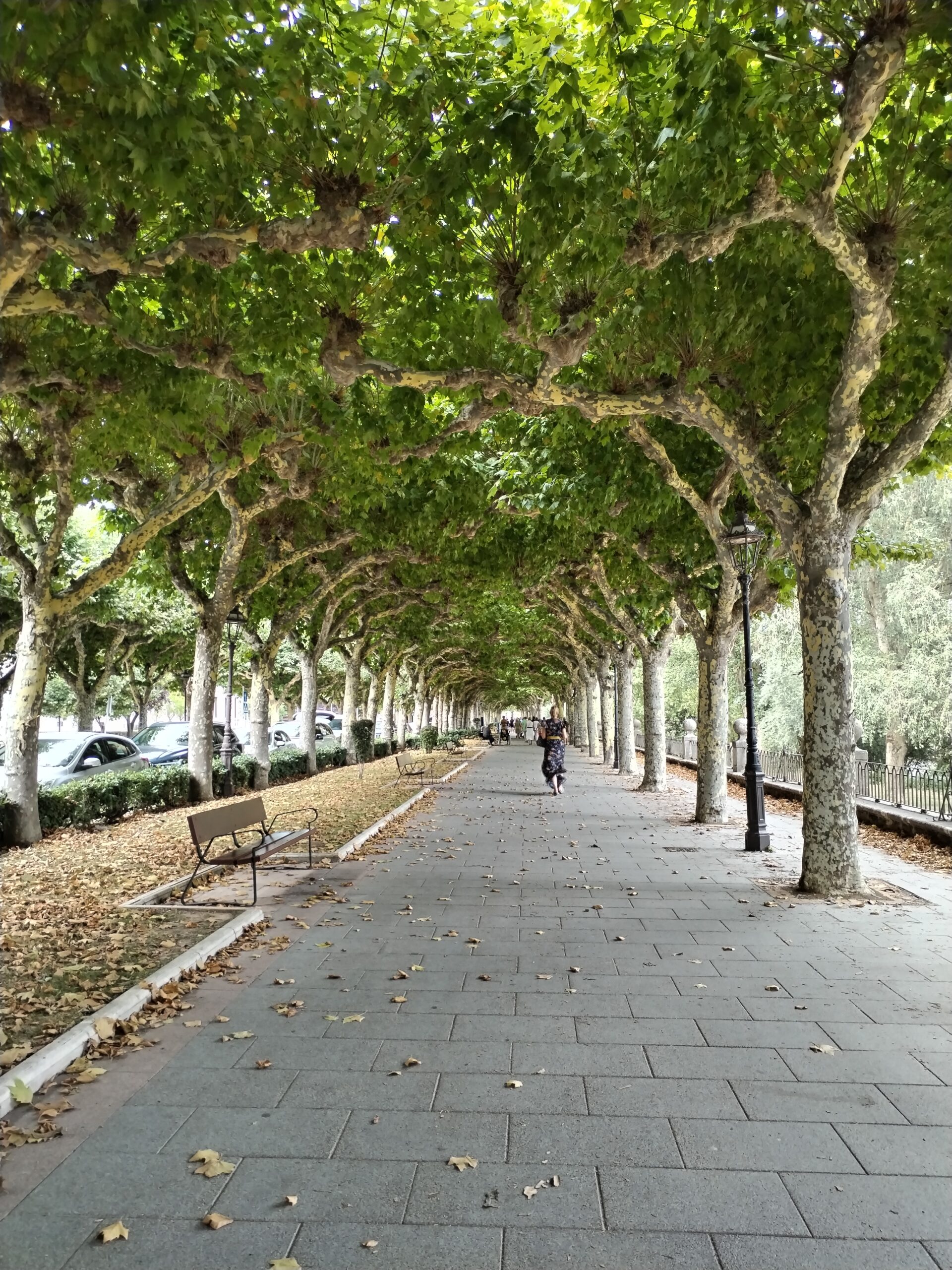
Twisted trees on Burgos riverside
The Camino de Santiago
If you ever fancy walking the ancient route, you will encounter Burgos at around the midway point of the inland French Route. There are also a few Camino feeder routes which connect to the city, that of the Valle de Mena, a valley that goes through the province of Burgos, and another that comes right through the Basque Country, connecting Burgos to Vitoria-Gasteiz.
Many of these so-called feeder routes connect the two main east-to-west Camino routes which cross the north. The northern route hugs the coast of the Bay of Biscay, whereas the French Route sits inland and is flatter as it is mostly on the Castilian plain. The feeder routes then cross the northern mountains, connecting the two main routes. Some friends of our web page have done quite a few of these mini-routes and while they are less popular or busy than the main pilgrimage ways, they pass through some stunning and lesser-seen areas.
Shout out to the concert hall!
If you are in Burgos and fancy a concert, you might check out Sala Andén. This is a concert venue in a repurposed train building, and you can see the website here. The outside still has some old elements of the railway architecture, and there is plenty of space to bring kids to play with a bar and outdoor beer garden to enjoy a drink while the kids run wild. Inside, there is a sizeable music venue with bars and floor space to mosh, headbang or dance away to your heart's content. We went to see Manu Chao here, and you can read about our experiences here.
Slightly Beyond Burgos for another day?
Palencia (with a 'P', not a 'V') is just down the road or train track from Burgos, and looks like somewhere well worth a visit. This will be for another day, but it's only 45 minutes from Burgos on train. All of this is on the central Castilian plain, and the food and wine culture there is there for the tasting. The various towns and villages of this area tend to be locally renowned for one thing or another. Maybe one produces very good mushrooms, another might be famous for its ham or maybe a village has an annual fiesta with some unique and special traditions.
Whatever it is, the Castilian cultural area is a place where you will find something new and special at every stop.
